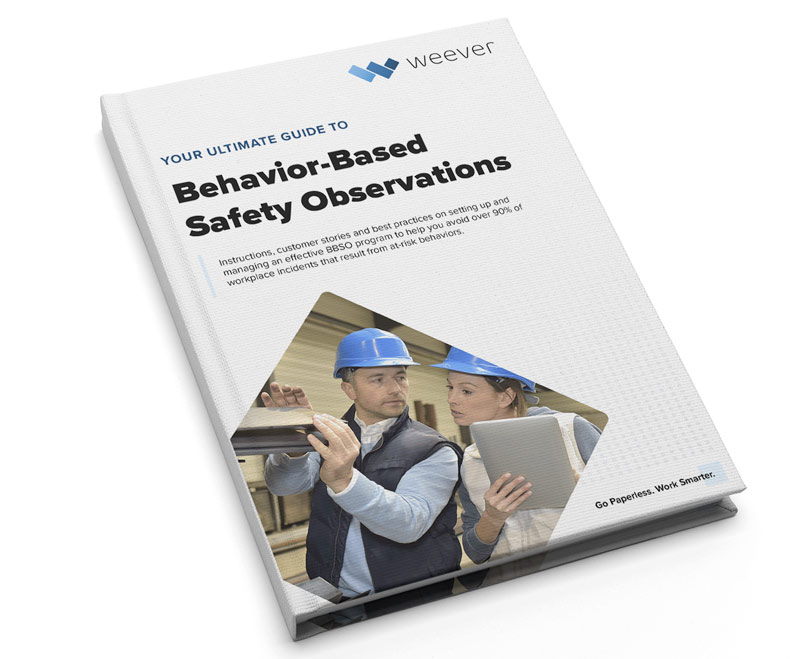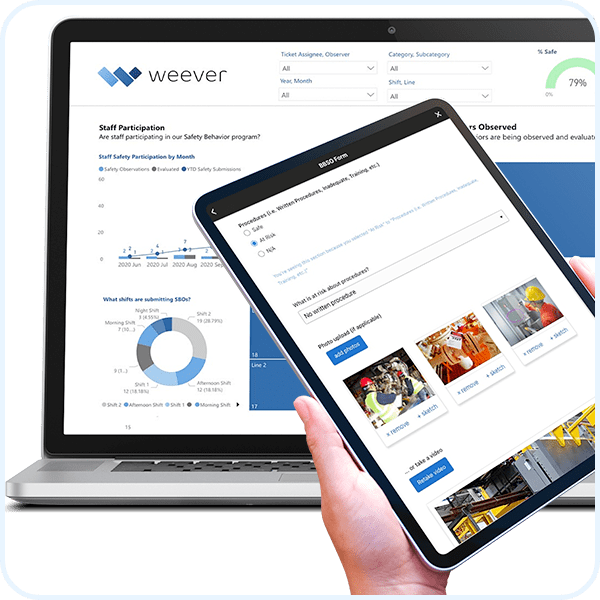The benefits of using a Peer-to-Peer methodology
Behavior Safety Observations
Andy Pritchard | Sept 13, 2023 | 7 min read

Peer-to-peer behavior-based safety observation programs offer several advantages over a more centralized data capture approach. These programs leverage the power of employees observing and providing feedback to their peers on safety behaviors.
Here's an overview of the benefits of peer-to-peer BBS observation program methodology:
Cultural Buy-In
Peer-to-peer observations promote a strong safety culture by involving all employees in the safety process. When colleagues are actively engaged in safety practices, it fosters a sense of shared responsibility and commitment to safety.

Cost-Effective
Implementing a peer-to-peer BBS program can be cost-effective because it doesn't require hiring additional personnel or investing in expensive centralized data collection systems. It leverages existing staff.
Continuous Improvement
Peer-to-peer programs encourage ongoing safety discussions and improvements. Employees are more likely to share their insights and suggestions for enhancing safety practices.
Increased Employee Engagement
Employees often feel more comfortable receiving feedback from their peers than from supervisors or management. Peer-to-peer interactions are seen as less authoritative and more collaborative, leading to higher employee engagement in safety initiatives.
Real-Time Feedback
Peer observers are typically on the same work shifts and closely interact with their colleagues. This proximity allows for real-time feedback and immediate correction of unsafe behaviors, reducing the likelihood of accidents.
Behavior Reinforcement
Positive peer feedback serves as a powerful motivator for safe behavior. When employees receive recognition from their peers, it reinforces safe practices and encourages them to continue following safety protocols.
Behavior Variety
Different employees may have unique perspectives and experiences related to safety. Peer observers can provide a diverse range of insights and identify safety concerns that might be missed in a centralized approach.
Reduced Hierarchy Barriers
In centralized data capture approaches, there can be barriers to communication between frontline workers and management. Peer-to-peer observations break down these hierarchy barriers, creating a more open and collaborative safety environment.

Enhanced Learning and Skills Transfer
Peer observers can share best practices and safety knowledge acquired through experience. This knowledge transfer helps less-experienced employees develop their safety skills more effectively.
Customization and Flexibility
Peer-to-peer programs can be tailored to suit the specific needs and culture of the organization. They allow for flexibility in designing observation forms, checklists, and feedback processes.
Peer-to-peer behavior-based safety observation programs create a collaborative, engaging, and proactive approach to safety that can significantly enhance the overall safety culture within an organization. By leveraging the power of employees to monitor, provide feedback, and support each other in safe behaviors, companies can reduce incidents, improve safety performance, and create a workplace where safety is everyone's responsibility.


